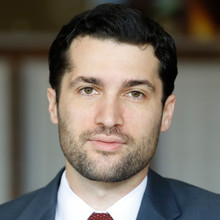Armed Conflict
Courts & Litigation
Criminal Justice & the Rule of Law
Intelligence
Surveillance & Privacy
Terrorism & Extremism
Motions on <em>Clapper</em>'s Implications for Standing in the <em>Hedges</em> Second Circuit Appeal
Peter Margulies recently discussed the effect of the Supreme Court's recent decision in Clapper v. Amnesty International USA denying standing to plaintiffs challenging the NSA's warrantless wiretapping program on the ongoing litigation in Hedges v. Obama.
Published by The Lawfare Institute
in Cooperation With

Peter Margulies recently discussed the effect of the Supreme Court's recent decision in Clapper v. Amnesty International USA denying standing to plaintiffs challenging the NSA's warrantless wiretapping program on the ongoing litigation in Hedges v. Obama. (Steve made a similar argument last May, before the Court decided Clapper.) Hedges, you will recall, is a challenge to the detention-authorization provisions of the 2012 NDAA (specifically § 1021(b)) brought by a group of journalists and human-rights activists who argued that the allegedly expansive language of the statute could authorize indefinite detention of non-combatant U.S. citizens like themselves. (For Lawfare's previous posts on Hedges, see here.) The district court issued a permanent injunction against the detention provisions. The Second Circuit stayed the injunction pending appeal.
Three weeks after the Second Circuit heard oral argument in early February, the Supreme Court issued its Clapper decision. Unsurprisingly, the government filed a Rule 28j letter the very next day arguing that, like the Clapper plaintiffs, the Hedges plaintiffs could not "establish a present or 'certainly impending' injury-in-fact" and that the NDAA's detention provisions, like the NSA warrantless wiretapping authorization, merely permitted rather than required the government to take a particular action. Thus, Clapper required the Second Circuit to dismiss the Hedges suit on standing grounds, the government contended.
The Hedges plaintiffs responded in mid-March, requesting additional briefing and oral argument on Clapper's effects. They argued that "Clapper’s factual and legal predicates differ dramatically from those in the instant appeal and have only superficial similarities to Hedges." They noted that the Hedges statute, unlike in Clapper, is "self-executing [and] does not require the government to seek permission of an independent body [i.e., the FISA court] before acting under its provisions." In addition, the Hedges court explicitly found that the plaintiffs fell under the scope of the detention provisions, whereas "the Clapper plaintiffs . . . were never the intended targets of the [warrantless wiretapping] act." Finally, the Hedges statute implicated First Amendment speech rights in a way that the Clapper statute did not. On the basis of these distinctions, the plaintiffs argued that the Rule 28j procedures the government used to inform the Hedges court of the intervening Clapper decision were insufficient to settle the issue, and that further briefing and oral argument was necessary. The government responded on Thursday, arguing that Clapper clearly requires the Second Circuit to dismiss Hedges for lack of standing, and that in any case the government's Rule 28j letter and the Hedges plaintiffs' response provides all the supplemental briefing that may be necessary.
I'm not much of a betting man (or at least not a successful betting man, as my NCAA brackets' sorry showing will attest to), but I'd guess that the Hedges injunction is not long for this world. Even before Clapper, it was unlikely that the Second Circuit would uphold such a broad restriction on the government's detention authority. The Supreme Court's narrow view of national-security standing now gives the Second Circuit an even easier way to dispose of the case.
Alan Z. Rozenshtein is an Associate Professor of Law at the University of Minnesota Law School, Research Director and Senior Editor at Lawfare, a Nonresident Senior Fellow at the Brookings Institution, and a Term Member of the Council on Foreign Relations. Previously, he served as an Attorney Advisor with the Office of Law and Policy in the National Security Division of the U.S. Department of Justice and a Special Assistant United States Attorney in the U.S. Attorney's Office for the District of Maryland. He also speaks and consults on technology policy matters.


-final.png?sfvrsn=b70826ae_3)

